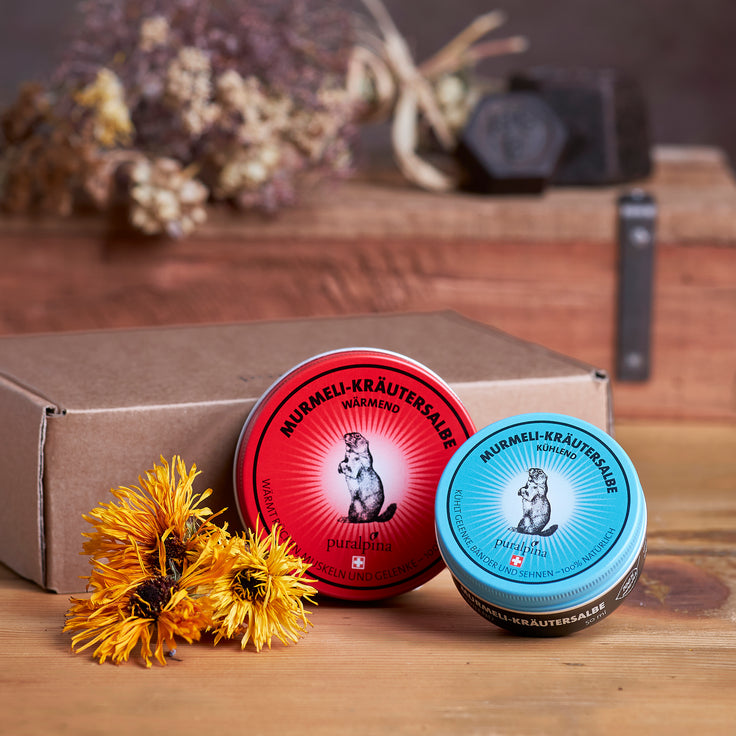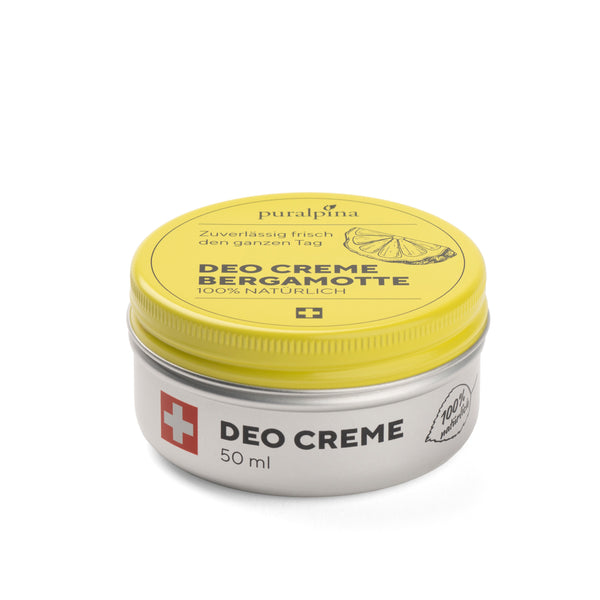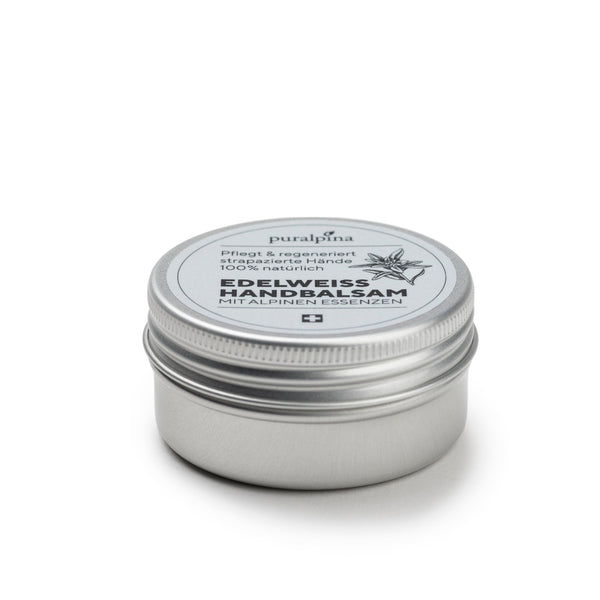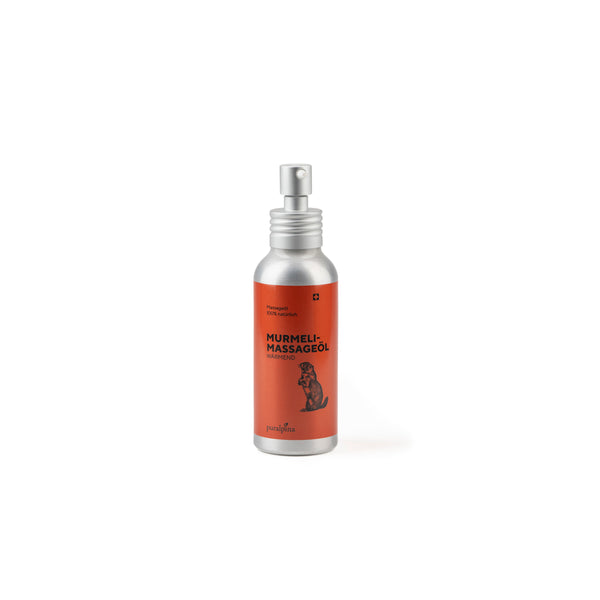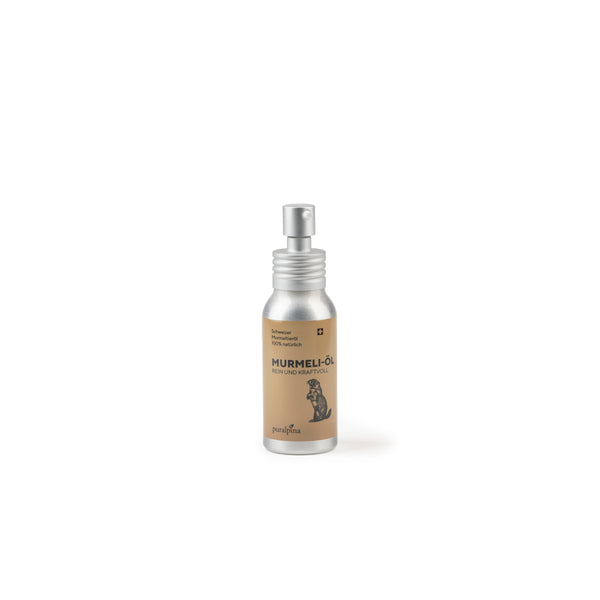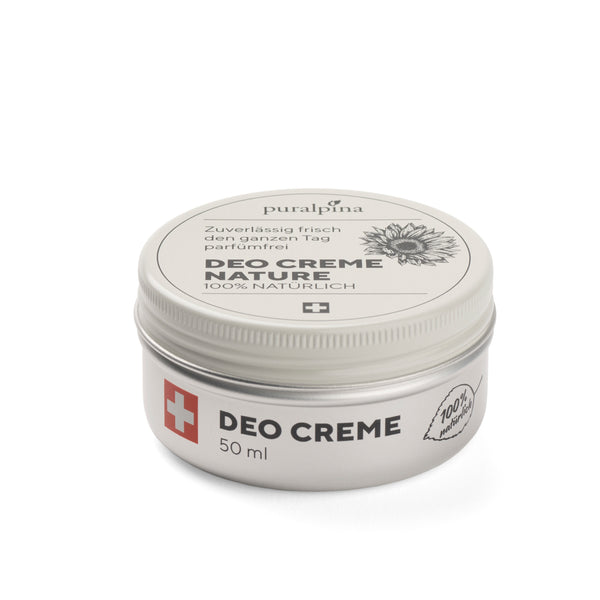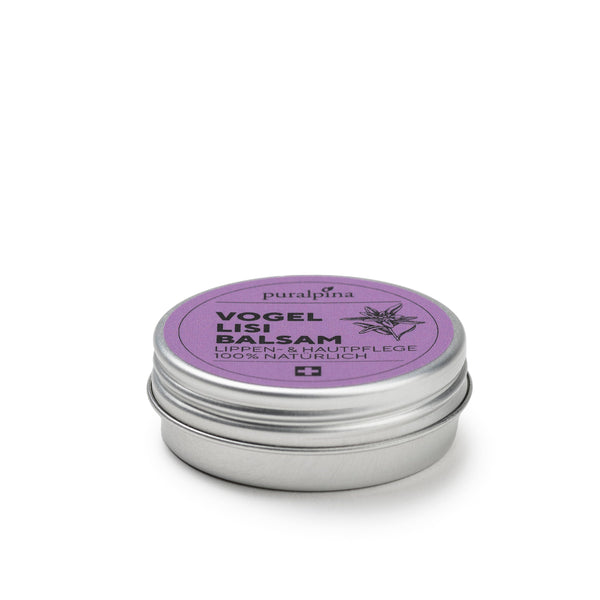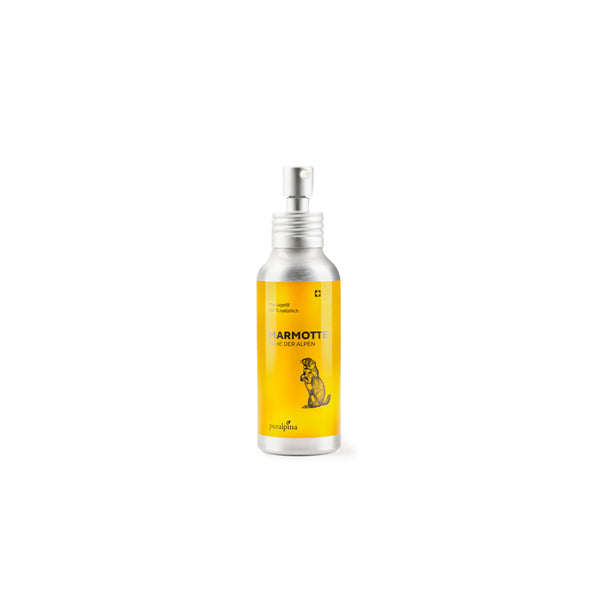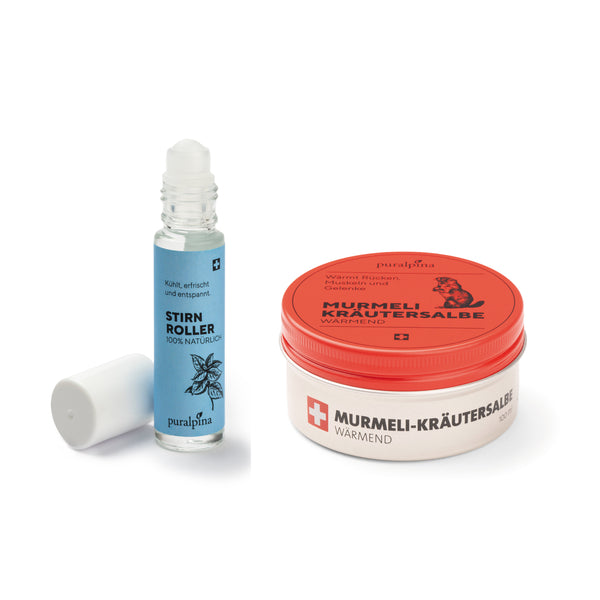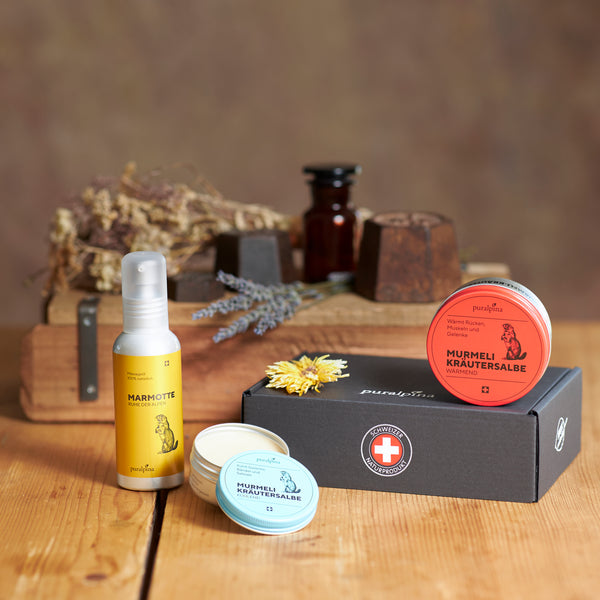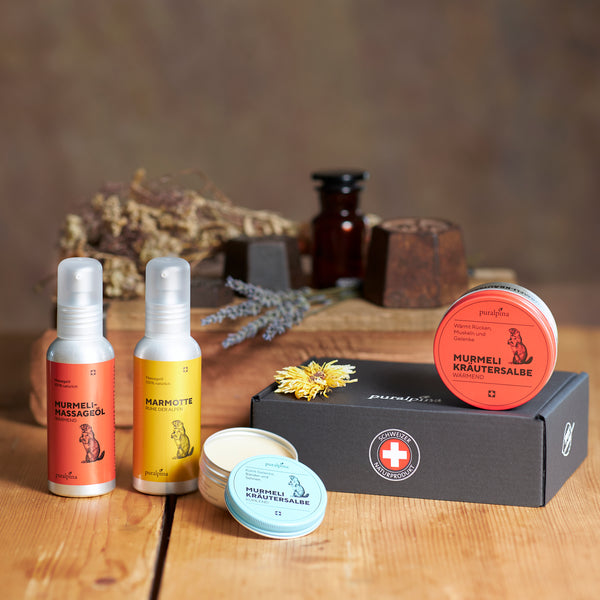Split
Marmot Set small
for beginners
Should I warm or cool? In many cases, this is not entirely clear. Every person and their ailments are different. So a clear answer is not always possible straight away. With the small marmot set, you can simply try it out for yourself to see whether heat or cold helps you better.
Our marmot herbal ointments with marmot oil can do both. Combine these all-natural marmot ointments to create a powerful home medicine cabinet.
You can find these products in the small Murmeli set
1 x Marmot herbal ointment warming 100ml
1 x Murmeli herbal ointment cooling 50ml
Would you like to give the marmot set as a small gift?
Then choose the variant with the gift box.
Further information
Marmot oil contains a unique power: corticosteroids, natural relatives of cortisone. Together with selected herbs, oils and fats, we create these unique and powerful mixtures.
Do you have a question?
How often can I use products containing marmot oil?
You can safely use the marmot herbal ointments, marmot massage oil and Marmotte several times a day. The many positive feedbacks show that satisfaction is very high when used several times a day ( for example, once in the morning and once in the evening).
You can use pure marmot oil two to four times a week. It is ideal for strengthening our marmot herbal ointments. Simply add a drop of marmot oil when rubbing in the marmot ointment. This way you can unleash the full power of the marmot oil and the herbs.
Should I warm or cool?
We are often asked this question. Unfortunately, for legal reasons, we are not allowed to give you any tips or information here.
Over www.google.ch you will find lots of interesting information about when you should warm or cool. Search for words or phrases like:
Heat therapy / cold therapy / treatment of «xy».
Search for the health topics or applications that interest you. You can also search directly on Google for the treatment of specific complaints (such as strains, bruises, inflammation).
Always remember that the information you find may not be correct and question what you read critically. It is always best to contact your doctor or therapist and ask for their professional opinion.
Our competitors have also provided some useful information. We hope this will make your search a little easier:
www.avogel.ch/de/ihre-gesundheit/rheuma/selbsthilfe.php
www.perskindol.ch/de/wo-tuts-weh
www.dul-x.ch/main.php
flexikon.doccheck.com/de/heat therapy
www.gesundheits-lexikon.com/ Therapie/Physiotherapie/Kaeltetherapie-.html
de.wikipedia.org/wiki/Heattherapy
Storage and shelf life
If stored correctly, our marmot ointments, marmot oil and massage oils have a shelf life of 2 years. Store our marmot products in a cool place, protected from light. It doesn't have to be the fridge. The medicine cabinet in your home is sufficient. You can find the best-before date on the product.
A small request from us:
Remember. The date on the products means "best before" and not "dangerously low" 😊. If the product still smells good, you can use it for longer.
Where does marmot oil come from?
The marmot fat, the chamois fat and the badger fat all come from Swiss hunters. We buy these high-quality raw materials directly and exclusively from responsible Swiss hunters. This means we know exactly where our animal fats come from.
In order to prevent overpopulation and diseases, the population of these wild animals is controlled through hunting. The federal government and the respective cantons monitor the hunting.
What active ingredients does marmot oil contain?
Marmot oil received scientific confirmation in a research report in 1988*. In this study, various corticosteroids (natural relatives of cortisone) were detected in small amounts in marmot fat. This natural cortisone substance is sufficient to give marmot fat its special power. This finding was new and unique in the animal world. This report points out that marmot oil and badger fat have been used to treat various ailments since at least the Middle Ages. The focus has always been on external use for the musculoskeletal system.
* Deutsche Apotheker Zeitung, 128, No. 38/88, research report by Hildebert Wagner and Dieter Nusser, Institute for Pharmaceutical Biology at the University of Munich
